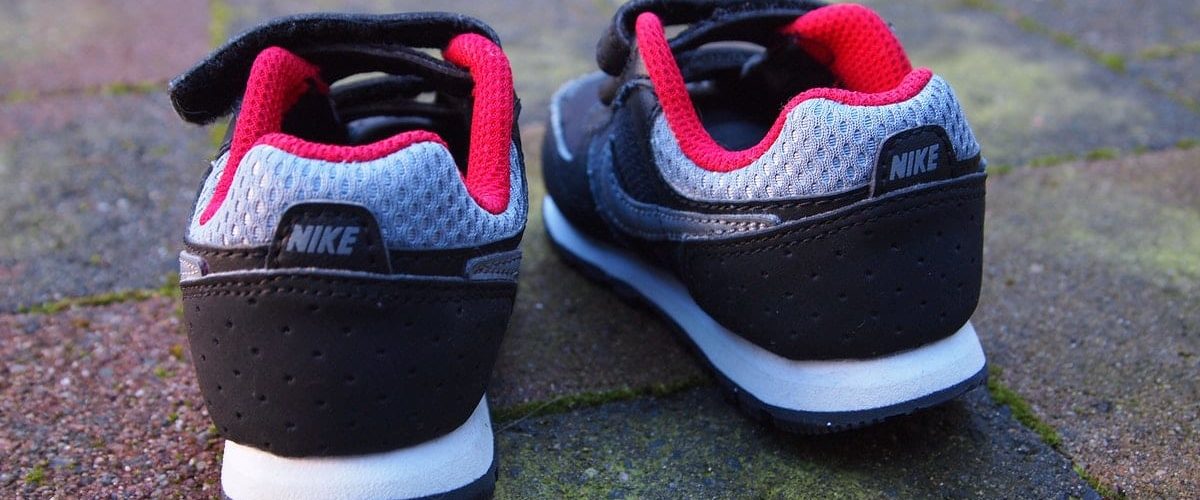
This article is part of a series of innovation deep dives into large enterprises across a variety of industries. Read our previous articles about Walmart and Bank of America.
One might think that all you need to sell sneakers, sportswear and equipment is a good product and a better marketing plan. But multinational sporting goods manufacturer Nike shows that that is not the case.
By going beyond product innovation and infusing technology into every aspect of their operations, Nike has been able to retain a competitive edge in the physical and digital space.
Today, thanks to their innovative nature and continual investment in technology, Nike has transformed itself from a sports company to a tech-focused company, generating more than $34 billion in 2017 alone.
Join us as we explore how Nike retains their innovative edge in this increasingly competitive time.
Adoption and Creation of New Technology
One of the ways that Nike has retained their competitive edge is by continually adopting new innovations into their ecosystem and creating new ones themselves.
Since 2009, Nike patents have almost doubled, surpassing competitors Adidas and Under Armour — not to mention Ford, Lockheed Martin and Pfizer.

Beyond creating patent-worthy innovations, Nike is also an expert at adapting existing technologies and collaborating with technological giants.
At the 2017 Dell EMC World event, Nike showcased how augmented reality and virtual reality are going to help them create better shoes in the future. Nike aims to use these technologies to improve the design process and the end product.
Nike also announced a collaboration with Hewlett Packard to test whether HP 3D printers can create the high-quality shoes Nike is known for.
As new technologies continue to enter the market, Nike will undoubtedly find new ways to adopt new technologies to their benefit, ensuring they always remain at the forefront of innovation.
Focus on Consumer Experience
At their core, Nike is a consumer goods company, and one of the things they excel at is ensuring that their consumer always benefits from their innovation.
“As consumer expectations continue to accelerate, Nike will evolve and innovate to exceed those expectations.”
This continual commitment to innovation for the consumers is seen through the ongoing emphasis Nike places on the customer experience.
A 2016 patent filed by Nike for an augmented reality design system indicates that in the future, consumers may be able to design their product of choice in real time through a virtual proxy, possibly serving as an enhancement to the NIKEiD custom shoe design site.
Nike is also exploring the use of augmented reality in their physical locations through a collaboration with SmartPixels. The French designed machine allows customers to visually tailor shoes to their liking through the use of a hologram.

In 2017, Nike released an NFC chip enabled jersey that intertwines the internet of things (IoT) and wearables. The idea of the jersey is to strengthen the connection of basketball fans to players by giving fans the chance to increase their emotional connection to their favorite players.
The jersey has a chip that connects to a Nike app. When the wearer taps their phone to the chip, they receive content like videos or real-time game stats about the player whose jersey they are wearing.
By continually using technology to strengthen the connection consumers have with their product, Nike showcases that they surpass their competitors innovation-wise while accentuating their commitment to their customers – something they will likely recognize and appreciate in the form of continued brand loyalty.
Innovation for Shoes and for the Planet
In addition to integrating innovative technology into their products and enhancing their customers’ experience, Nike is seeking innovative technologies to improve their manufacturing and supply chain process.
One of the ways they are doing this is by adopting sustainable practices that benefit the planet and their bottom line.
Today, more than 71% of materials used for Nike footwear and apparel products are made from recycled material – an impressive feat when considering that since 2008, Nike has increased their revenue by more than 64%.

During this time, Nike has been able to leverage sustainable innovations to limit emissions at their facilities, ensuring they are en route to meeting their 2020 goal of sending zero waste to landfills.
In addition to their goal of zero waste, Nike also wants to run on 100% renewable energy by the year 2025. In order to do so, Nike is adapting alternative solutions such as using an experimental daylight delivery system to bring natural light to their facilities, using solar panels and wind turbines to produce power and integrating thermal energy systems to store unused heat for future use.
The commitment to sustainability is also making its way to the products Nike is releasing. The Flyknit shoe has a one-piece upper part that reduces the number of cuts needed to be made, thereby reducing Nike’s waste production by more than 3.5 million pounds.
Ultimately, Innovation is in Nike’s DNA
While Nike creates and adopts a wide range of technological innovations, the one thing that continually sets them apart and ensures they are always innovative is their company culture and approach to corporate innovation.
Nike Co-Founder Bill Bowerman got the inspiration for the first running shoe from his home waffle iron, still located at the Nike headquarters.
This ability to think outside the box and use creativity is what ultimately propels Nike forward and helps them retain their innovative edge.